When the Hesketh superbike was launched, Tim Bolton knew that he could never afford one. But little did he know that, within a few short years, he would be building his own from scratch…
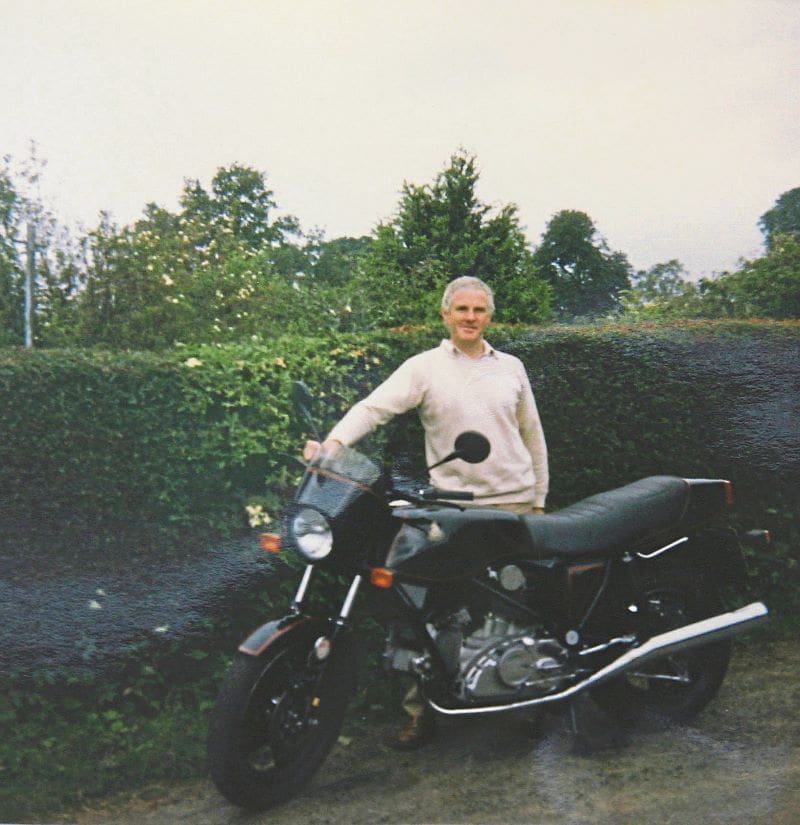
Like many enthusiasts in the late 1970s and early 80s I followed the Hesketh story avidly through the weekly motorcycle papers and also, from time to time, the national press.
Here was a great British story, a totally new motorcycle – indeed a superbike – with a big V-twin engine following in the wake of those other great British machines, Brough Superior and Vincent.
An exotic V-twin, to boot, with chain-driven twin overhead camshafts and four valves per cylinder and a 90-degree angle between the cylinders, the engine suspended beneath a steel tube trellis frame along the lines of a Ducati, and accompanied by many Italian components, Brembo brakes, Marzocchi forks and Dell’Orto carburettors to add to the pedigree. Yes, it might not be a Ducati as we would know it; more like Ducati’s farm worker cousin, the one who always had two helpings of pasta, extra glasses of Lambrusco and regularly finished off the tiramisu.
The driving force behind this new machine was Alexander Fermor-Hesketh, 3rd Baron Hesketh, a member of the aristocracy and a former Formula 1 team owner who had achieved some success with the charismatic James Hunt as his driver, and considerably more notoriety as a team that liked to have fun and party. The engine unit was to be designed by Weslake, a company well-known for its engine design and development work and the machines would be built in a brand new factory at Daventry, just a few miles from Easton Neston, Lord Hesketh’s estate. What could possibly go wrong? As we were later to find out, just about everything.

More expensive than a house
Much as I liked the idea of this new British motorcycle, purchasing one was out of the question. Besides bank and building society managers to keep in their customary luxury, I also had a wife and two young children to support and a new Hesketh was more than the cost of my first house. Anyway, while I liked to travel with vehicles that had some pedigree, by the time they got into my keeping they were well used and consequently had to be cheap for me to be remotely interested.
The new Hesketh looked absolutely splendid, particularly in its most photographed finish of nickel plated frame, metallic red paintwork with gold lining and gold anodised Astralite wheels – surely the most gorgeous wheels ever to grace a motorcycle. A further embellishment added to the prestige as a facsimile of Lord Hesketh’s signature was engraved into one of the engine covers and picked out in red paint. Other finishes were available, I’ve seen machines in black, white and blue but these were less popular.
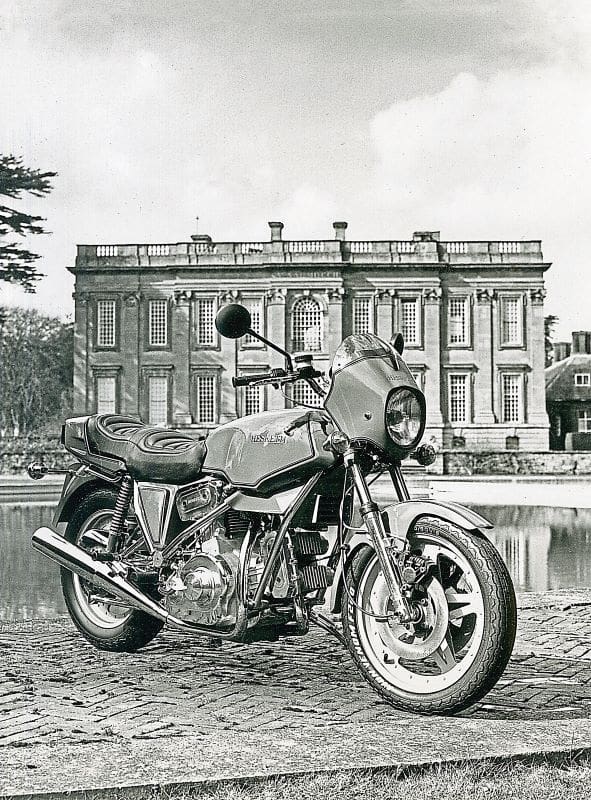
Problems…
All seemed to be well, given the regular updates, but the test day to which the specialist press were invited proved to be disastrous and, far from being the start of a successful journey for the machine that promised so much, the opposite occurred. The gear change was universally condemned to such an extent that production was halted for several months while the gear change mechanism was redesigned and produced.
I still find it bewildering that the machine got to this stage without the very poor gear changing being picked up. Development rider Mick Broom was at that time quite a handy road racer, being sponsored by the Geeson brothers, so no doubt he would likely have raised concerns. Some early gearbox testing took place on a remote road in mid-Wales, where, on one occasion, surface ice had to be chipped away before testing could begin. Whether gear change problems were reported and not acted upon I am unable to tell; however, I maintain that, had Lord Hesketh been a motorcyclist, he would have been very much aware of the problem after just a short test ride.
And then more problems
There were other problems with the motorcycle, which should have been rectified long beforehand and the machine was too tall and too heavy for many riders (although I personally never found it too tall), both Lord Hesketh and his right hand man, Anthony ‘Bubbles’ Horsley, were both tall so they may have considered the bike acceptable.
The production delay to fix the gear change problem did nothing for customer confidence nor for the company’s balance sheet. Neither did it really make much difference to the gear change action. Even after some Mick Broom fettling advice was applied, the gear change could not be termed anywhere near slick – slow and very deliberate was the only way to change gear. So, inevitably, the company went out of business. Several people were said to be interested in taking on the project but, as far as I’m aware, no one put in a bid. One man from a component company came to look but apparently was dismayed to find that the factory in Daventry was just an industrial building in which motorcycles were assembled. I’m not sure what he was expecting as very few (if any) motor vehicle companies manufacture every single component. With no willing buyers for the company an auction was scheduled for October 1982 to sell off the tangible assets and raise some funds for the creditors.
This is the point where I come in. Although, as I mentioned earlier, buying a completed Hesketh was out of the question, I was intrigued by an auction preview in a national newspaper (such was the interest in the saga) where the writer declared that enthusiasts would have the chance to build their own Hesketh. This most certainly increased my enthusiasm somewhat; never mind the faults, a cut-price motorcycle is not to be sniffed at, whatever the make or history.
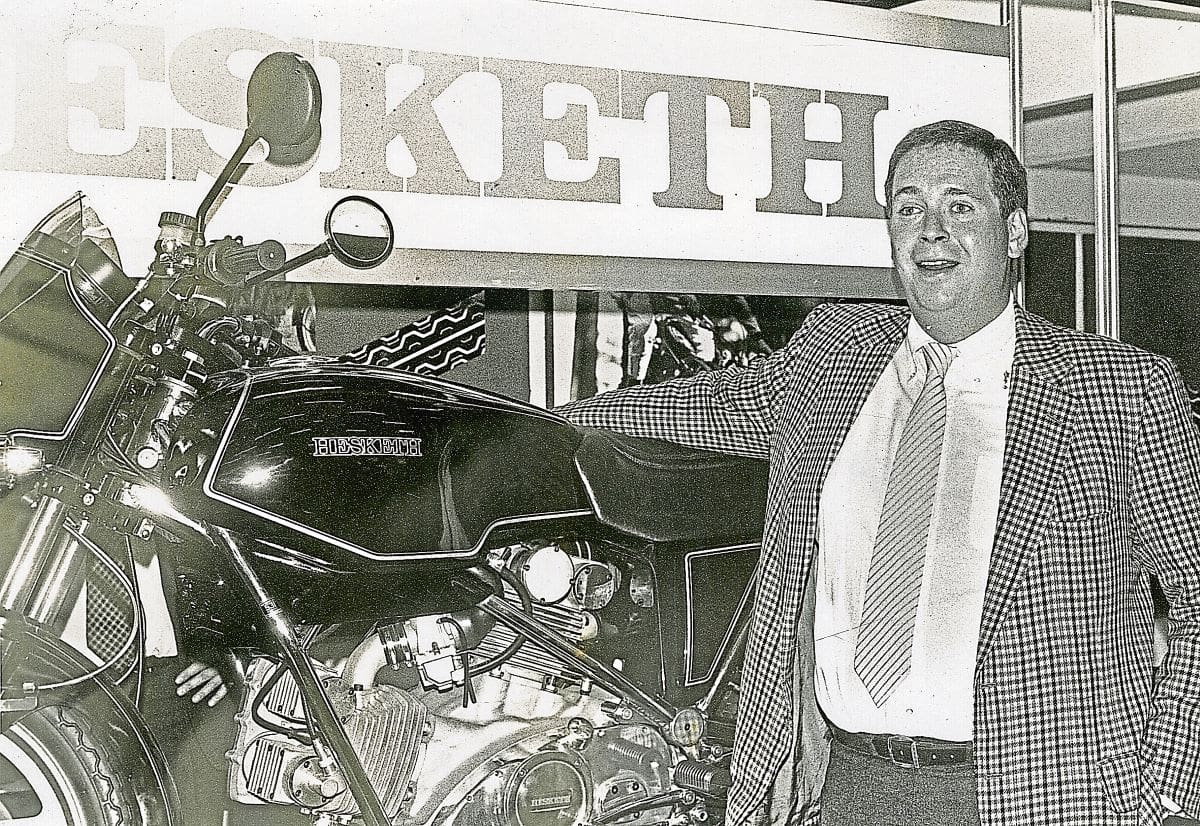
At the launch. What could go wrong? Well, quite a lot as it happened.
Hesketh goes to auction
Of course, the reality was somewhat different but it made a good story and raised my enthusiasm further. A new company, Hesleydon, had been formed, with Lord Hesketh, Bubbles Horsley and a few of the old Daventry team on board, including Mick Broom. A rumour at the time was that Hesleydon had obtained an order to produce 60 complete machines for the Japanese market, a rumour which was actually very near the mark. The auction took place over two days, Friday and Saturday, with viewing on the Thursday before at the factory in Daventry and I attended all three days.
On the preview day I spotted stillages full of castings in a separate part of the building. On enquiring, I was informed that these would not be in the auction as they were to be returned to the foundry, each casting being faulty, mainly with blow holes in the alloy or so I was told. Even today, some 40 years on, I am still unable to comprehend this. Down the M5 corridor from the Black Country to Worcester, there are numerous casting companies, each one surely capable of producing a decent alloy casting? At one time, engine builders Cosworth had a foundry in Worcester producing racing car engine blocks, so why couldn’t a reliable supplier have been found? Whether the faulty casting story was true or not I am unable to tell as I have no evidence to the contrary, but I will return to the subject of castings later.
I have attended many auctions over the years both before and after 1982 (and still do), but the Hesketh auction stood out and continues to stand out for one main reason. While most auctions have a mix of lots in varying states of condition, from the good to the absolutely awful, all of the items on offer at Daventry were almost brand new and very clean and shiny. Even the dustbins were shiny both inside and out. My overall feeling was one of sadness, so much wasted effort, so many dream jobs lost.
With the rumoured Japanese order in mind it was assumed that Hesleydon would storm the auction and buy everything in sight, money no object. How wrong that assumption was. It became obvious over the coming weeks and months that Hesleydon was playing the long game. A very long game. While Mick Broom attended the auction, he said little, if anything, just stood and watched while quantities of brand-new parts were sold off, much to the surprise of many. He did buy one item though, a gearbox setting jig, a modest piece of equipment, capable of being put together by anyone with a modicum of engineering ability and access to the required dimensions. For this device the sum of something like £35 was paid but, no doubt, if any other serious bidders became involved Hesleydon would have paid whatever it took to obtain this jig.
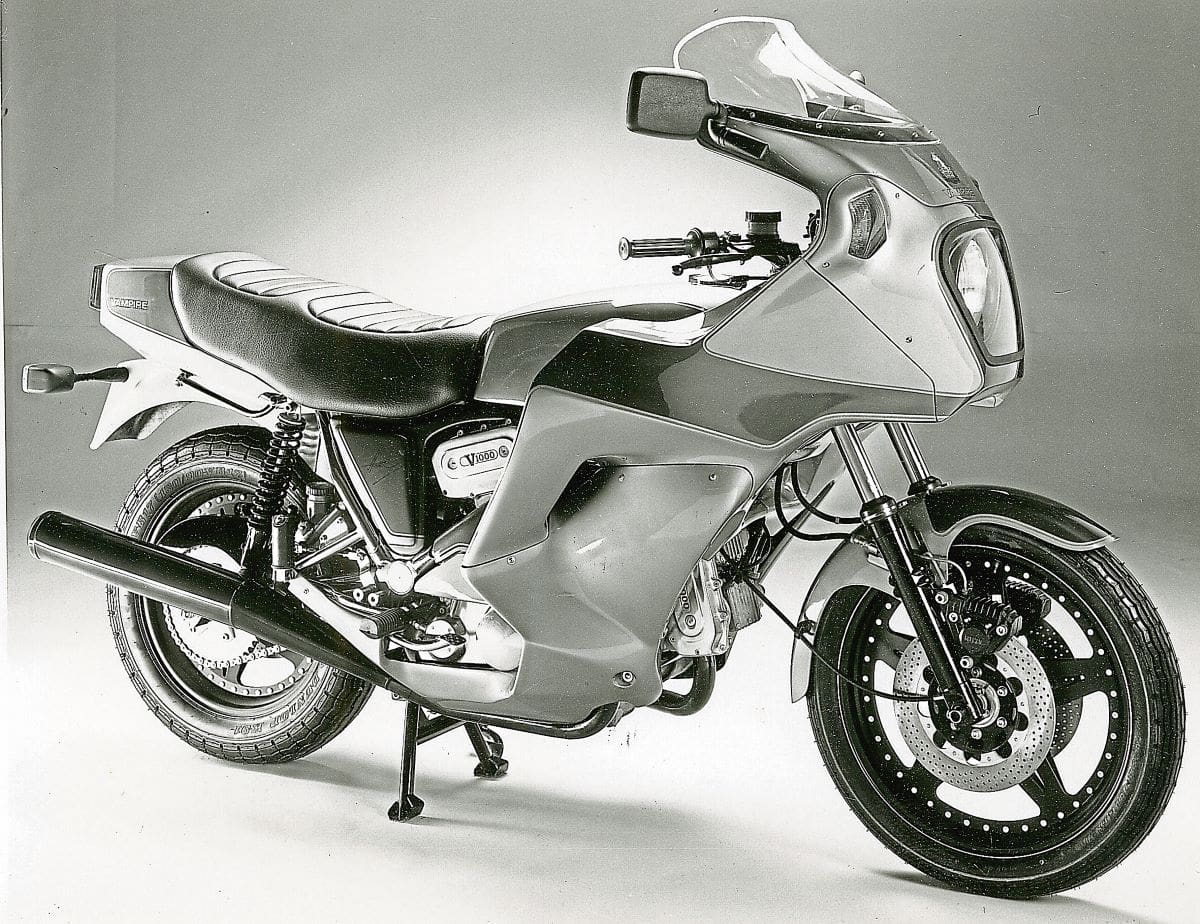
Not enough parts for a motorcycle…
I managed to buy a few items at the sale; a sheet zinc-topped workbench and a labelling machine complete with blank Hesketh labels, which I intended to use in my business but never did. As to motorcycle parts, I bought a frame complete with forks, swinging arm and wiring harness, a pair of wheels fitted with tyres and that was about it. Definitely not enough to make a rideable motorcycle. Many parts were available after the auction from those who had bought more items than they needed and the car park resembled a Moroccan bazaar with some incredible deals available and I was able to buy up a few more parts at good prices.
During the auction I came in contact with two owners of the first motorcycles to leave Daventry, Eddie Faulkner and Colin Evans. Eddie was keen to start a Hesketh owners’ club, which I thought was a good idea. I’m sure most readers will be aware of the many benefits of joining an owners’ club, so I won’t elaborate here. Somewhat luckily for me, the constitution of the club was to be very inclusive – members didn’t actually have to own a Hesketh to be able to join, merely be interested in motorcycles and pay the subscription, although I suppose owning a Hesketh bench and labelling machine may have qualified me, anyway!
I was warned at the auction that I stood no chance of putting a complete rideable machine together out of parts, which was possibly a realistic assumption since I had neither a workshop manual nor a parts list to refer to, just relying on my automotive training to identify what was needed. And at this stage I had very little in the way of parts but I was determined to continue in my quest.
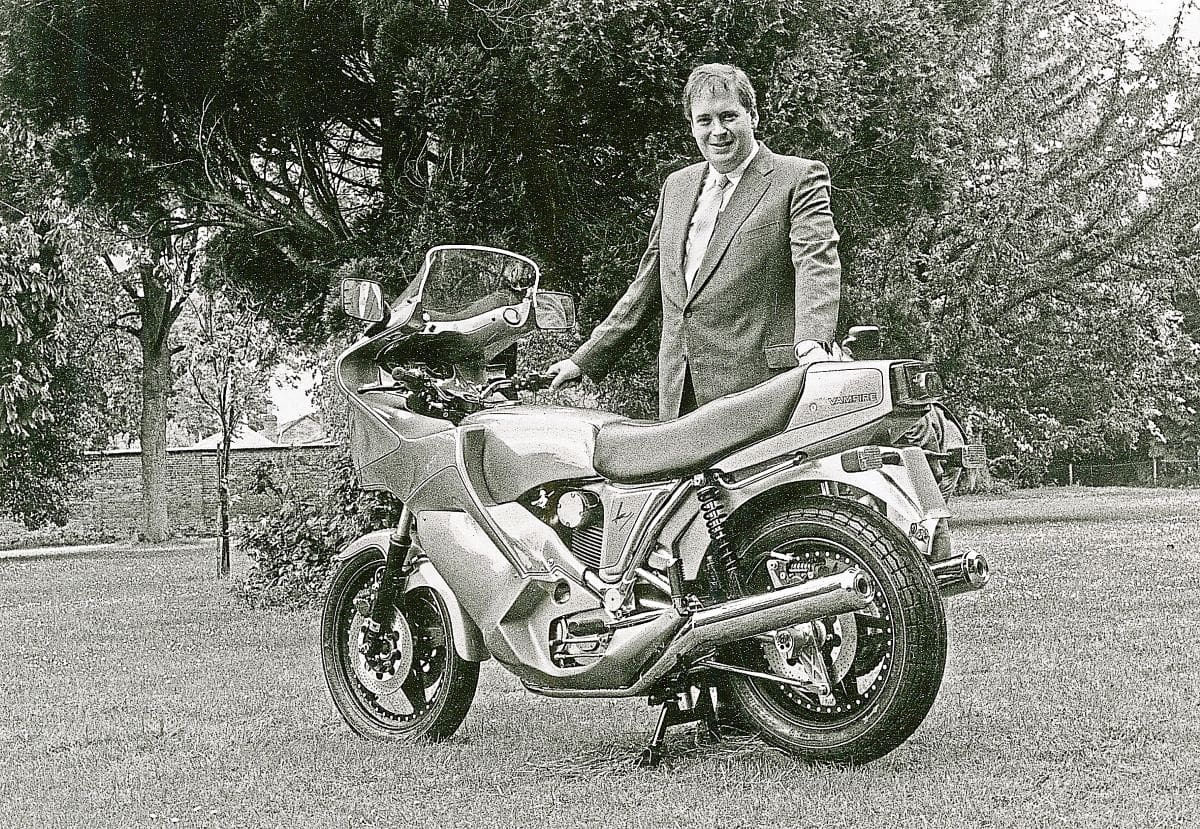
More than enough parts for a motorcycle!
But things would change when through the grapevine I heard that ex-Hesketh service engineer Rob Sawyer had accumulated a large trove of parts, many bought at the auction, and he was keen to sell these as one lot. After making contact I agreed to buy what he had and such was the amount that I hired a VW LT van to move the parts. There were almost two complete engines, two sets of bodywork, complete forks and several tote pans full of new gearbox internals and other items. The tote pans were much like other items at the auction in that they were in immaculate condition, I’ve seen many a cooking utensil in far worse state.
Back at home I was able to convince my then wife that these gearbox parts needed to be kept somewhere warm and dry and what better place than next to the radiator in the living room? I have possibly been fortunate in life that I have lived with two ladies (not at the same time I might add) who have been willing to tolerate motorcycle components being kept in the house, in the interest of preservation of valuable parts, of course.
As time went on I became aware of two things. With the extra parts that I now had, building a second machine seemed remotely possible, but as we all know a frame, engine and wheels do not constitute a motorcycle, it’s the little bits that make one complete and these are often the hardest and last to be found. The other fact was that the entire stock of new Hesketh gearbox parts now sat in my lounge and inevitably Hesleydon and myself would be in contact, and indeedwe were.
One afternoon Mick Broom arrived at my house on his Hesketh combination and we started negotiating. Or rather we didn’t. Mick offered a price and that was it. As much as I tried to get the price up he wouldn’t budge, not even a pound, and after a long session I agreed to his price. In reality, there was only going to be one serious buyer for the gears and they had just bought them. Although this was a hard session with Mick, I did find afterwards that both he and the Hesleydon team were extremely helpful on many occasions, far more than they were obliged to be.
One becomes two
During the winter of 1982 and into the spring of 1983 I spent a lot of time tracking down parts. I was self-employed and travelled the West Midlands on a daily basis, so it was easy to drop in on people who might have parts. Some had one or two items, others van loads. I think some people got carried away at the auction and afterwards wondered what they were going to do with their purchases, while others had bought lots that contained items that were of no interest to them.
I discovered a company in Coventry that had nickel plated the frames and it had a few bare metal frames stored up on a mezzanine floor and I bought one from them (I would return some time later and buy more) and had it painted black – which I consider the only colour a motorcycle frame should be, unless, of course, you’re a custom bike builder; then it can be absolutely any colour your breakfast-fuelled brain throws up.
You may wonder if you’ve been following this why I need another frame when I already have an ex-Daventry one? The goal now was to complete two machines, ambitious or madness, a bit of both possibly. From a motorcycle dealer in Northampton I bought a complete gold coloured rear wheel, an item for machine number two (later I would buy a matching front from another auction). I ran the two projects side by side, concentrating more on bike number one which would have black bodywork with a red pinstripe and black anodised Astralite wheels. I made progress at a steady pace, the frame was set up on an upturned milk crate in my garage and I would try to do some work each night when I returned and before dinner time. A Hesketh is a relatively simple machine to put together and can be managed with just hand tools and two special tools, one of which holds a camshaft in place while the vernier sprocket is fastened to the end of the cam, the other being that gearbox setting jig, as I would discover later.
The Hesketh Owners Club comes into being
Towards the end of 1982 the inaugural meeting of the Hesketh Owners Club took place. Eddie Faulkner, who had put in a lot of work to get it started, became chairman and Colin Evans was appointed secretary. That left two positions open, treasurer and newsletter editor. Somewhat amazingly I was offered the choice and not being that brilliant with my own money, let alone anyone else’s, I opted for the role of editor, being a lifelong fan of the printed word. It was generally agreed at the meeting that the newsletter would be titled The Hesketh Sock, a nod to the nickname of the shape of the cam chain covers.
So, how did this happen? Just a few months ago I hadn’t even seen a Hesketh and now I had to come up with a missive that existing owners will accept, the word ‘editor’ covering just a part of the task, every area had to be covered by me. About this stage I make a mental note to myself: “Avoid meetings if at all possible and if you have to attend, sit at the back and keep your mouth firmly shut.”
Anyway I tackled the task with almost as much enthusiasm as I put into building a machine. While most people would expect an A4 sheet at this stage (as mentioned recently in OBM) I was determined to do better from the off. Using a combination of hand drawing, Letraset, cut and paste typed sheets, a photocopier and a long-armed stapler, I produced an A5 booklet, which had most of the traditional magazine features – news, technical tips, articles, events, readers’ letters, a short editorial and even paid advertisements.
Back to the bike building, most of it was up together with some parts easier to find than others. For instance, the headlamp was from a VW Golf, the oil filter a Renault 5 item and the battery originally fitted to a Hillman Imp. Switches were a Suzuki part and, as I mentioned earlier, the brakes were from Brembo. Not too long after I fitted the engine to the frame I came across a problem, the engine wouldn’t turn! The next day a telephone call to Mick Broom confirmed my suspicions, the gearbox clearances needed setting correctly… I know where the jig is, don’t I?
Mick agreed to sort it out for me, so it was engine out and stripped and I took the gear cluster over to Easton Neston to be set up correctly. As I’ve already mentioned, Hesleydon had an order for a number of motorcycles and these were being built in an old stable block at the house, being put together two at a time. They had gathered in vast quantities of parts, with formed frame tubing for the chassis being piled up in the real tennis court, where they shared space with old furniture and discarded prams from various eras. Where would you get 60 sets of machined castings from, though?
I would visit Easton Neston a number of times over the following years when I was in the area and being able to observe machines being built was useful information, particularly for the detailed stuff such as cable and wiring harness runs.
A Hesketh not built by Hesketh
I got what I would term machine number one to a finished running state but not yet road registered by the spring of 1983, thus – as I had been determined to – proving the doubters wrong. I was among a small band termed ‘home builders’, which would have been more correct as ‘bike builders’. I knew of two or maybe three others building up non-factory bikes and found all of these useful for a supply of parts, as they no doubt did likewise. Out there somewhere are five or six machines not built by Hesketh, Hesleydon or Mick Broom.
At that time, to get a non-factory machine registered for the road involved an inspection by a member of the local police force to check its roadworthiness. I put in a request and, after some weeks and a polite reminder, someone from the force turned up on a BMW to inspect the Hesketh. I would imagine that this inspection served two main purposes; one, to make sure that the machine was indeed roadworthy and not some rusty wreck held together with wire and two, perhaps more importantly, to make sure the builder wasn’t some local villain cobbling together machines out of stolen parts. The inspection as such wasn’t a physical inspection, merely some staring at the shiny Hesketh and a few questions, but importantly I’d passed the first stage. The next stage was to contact Customs and Excise, pay some duty and get a registration number. I was very anxious to avoid a ‘Q’ plate, which was given to vehicles of undetermined origin – I didn’t want the authorities to think what I had built was a Vineth, or even a Hebsa. Once again Mick Broom went over and beyond and produced a letter stating that what I had screwed together on a milk crate in Leamington Spa was indeed a pukka Hesketh, although he didn’t mention the milk crate.
Armed with Mick’s letter and all the paperwork I could gather, I went to the Customs and Excise office in Coventry. It must have been a slow day as the sole person in the office seemed pleased to see someone just to break the boredom – these were the days before smartphones – and was somewhat amazed to discover that the Hesketh had a bigger engine than the one in his car.
I got involved in some negotiation with the C and E man as he wanted duty paying on the list price of a new machine. I explained how I came to have the Hesketh and showed him my bunch of invoices and that they were for parts that would make more than one bike. After a bit of a stand-off and a phone call by him, a machine value of about £2000 was agreed. I paid the duty, whatever it was and he issued a registration number, FWK 380Y. It’s still out there somewhere.
The next stop was to get it insured and then round to a motor factors to get a rear number made. Back at home the number plate went on and up the road I went on the Hesketh. A few adjustments need carrying out, mainly to cables, but my ‘milk crate’ ran and rode well. I enjoyed riding it and showing it to fellow enthusiasts and even those people who possibly had never been near a motorcycle knew of the Hesketh saga.
Some years later when Mick Broom had taken control of Hesketh, I sold him some more parts. He would call in after testing a Heron Suzuki prototype up that lane in Wales, he said. I couldn’t wait for him to get the shutter door up on the box van, expecting some exotic machinery… I was disappointed to see a little three-wheeler, a 50cc machine apparently designed for the youth market to take advantage of some proposed legislation, which, as far as I know, was never implemented.
In 1994 I offloaded the last of my Hesketh parts to Mick and that concluded my association with anything Hesketh. It was a wonderful experience and I don’t regret one single part of it, but had I been aware of Mick selling up I may have been tempted to have a look…


